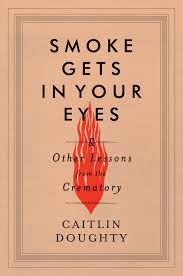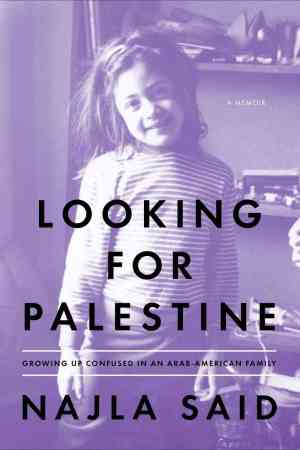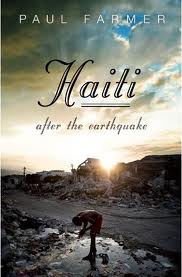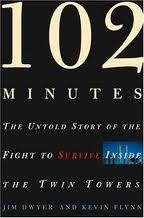 The meaning of life is that it ends – Franz Kafka (from Smoke Gets in Your Eyes and Other Lessons from the Crematory (2014) by Caitlin Doughty)
The meaning of life is that it ends – Franz Kafka (from Smoke Gets in Your Eyes and Other Lessons from the Crematory (2014) by Caitlin Doughty)
There comes a time in many of our lives when our preoccupation with mortality deepens, and the possibility of death seems to brim with a whole new meaning. I am not talking about when we first discover death as five-year olds, terrified and confused by the finality of it. This renewed understanding seems to happen much later, and to those of us who are lucky to live to be adults.
My mother tells me that when I was a petite six-year old, I would stare sadly at any senior we encountered, even for the briefest period. Because, I said, they were soon going to die. As a parent of a young child, who has had his own phase, I was afraid that he would ask a random white-haired, wrinkle-skinned person the question nobody wants to be asked: Are you going to die soon? While I may laugh at my fears over coffee with a friend, I know that the seeds have been sown. Death will now and forever occupy some portion of my child’s mind-space.
Caitlin Doughty, the author of Smoke Gets in Your Eyes (2014), talks about having a complicated relationship with death since she was a little girl. “Ever since childhood, when I found out that the ultimate fate for all humans was death, sheer terror and morbid curiosity had been fighting for supremacy in my mind.” As a young girl , Doughty witnessed the accidental death (I should say possible death, for the fate of the person is unknown) of another young girl—a memory that lingers on in Doughty’s mind long after the tragedy. “I became ‘functionally morbid’, consumed with death, disease and darkness yet capable of passing as a quasi-normal school girl.”
Quite recently, science reporter David Adam spoke with Terry Gross on Fresh Air about his OCD regarding HIV/AIDS. I believe that many of us share this “hypervigilance about an obsessive fear” (as Terry puts it) in varying degrees over various subjects. Most of this ‘many’ learn to be functionally morbid, yet privately absorbed in their thoughts.
Doughty talks about being drawn to not just death and dying, but to bodies, death rituals, grief, and other aspects of mortality. After spending four years at college researching the subject, Doughty finally decides that she has had enough of death on paper, and wants real bodies and real death. She then takes up the position of a crematory operator at a family-owned mortuary with dreams of one day owning a unique funeral home, La Belle Mort (Beautiful Death).
The book demystifies the post-death journey of those who choose to be cremated, and how they get from Mr. or Mrs. So-and-so to an urn of ashes and ground up bones. I knew very little about how modern crematories operate in the United States, and Doughty’s account was helpful in understanding how people (veterans, mothers, incarcerated drug addicts, the still born, amputated body parts, and bodies donated to science) all meet the same fate.
Corpses are rarely a thing of beauty. While they are themselves dead, they are a breeding ground for a veritable host of living creatures that, while are too tiny to be seen themselves, are not shy about leaving their mark behind. Decomposition is hard to miss, and you often smell it before you see it. As a crematory operator, Doughty was required to make the bodies ‘natural’ and presentable’ for a viewing, if the families so desired it. This involves make-up, of course, but also shaving, wiring the gums together, eyecaps to mask the flattened eyeballs, and other unnatural devices. While this prettying up is not meant to last more than a few hours, corpse preservation has apparently been a national preoccupation for about a century and a half. Embalming, as the process is known and which Doughty describes in some detail, “decorating our dead as lurid, painted props on fluffy pillows” is “the primary procedure in North America’s billion-dollar funeral industry.” Even a corpse can be a product.
Procedural details aside, Doughty’s central thesis is that the modern (American) relationship with death is fundamentally unhealthy. Our children are raised in a carefully corpse-free world, where people no longer die in their homes, bodies are transported quickly and discreetly in anonymous white vans, painstakingly given a “life-like” appearance before being expensively disposed. Doughty argues that corpses “keep the living tethered to reality”, make us aware of own mortality and in that process give rise to self-awareness and “the beginning of wisdom”, going as far as to say that the absence of dead bodies is the root cause of problems in the world.
Encountering a corpse forced the man who would be Buddha to see life as a process of unpredictable and constant change. It was life without corpses, trapped behind the palace walls, that had prevented him from reaching enlightenment.
Far from destroying the meaning in our lives, death, Doughty says, is the very source of our creativity, “the engine that keeps us running, giving us the motivation to achieve, learn, love and create…the great achievements of humanity were born out of the deadlines imposed by death.” According to Doughty, our culture that actively denies death and hides bodies is to blame not only for this morbid fear of death, but also for acting as a barrier to a good death—a death where living is valued over life, where life is not prolonged indiscriminately, where death is accepted as being serene and beautiful, just as birth is.
I found Smoke Gets in Your Eyes entertaining, not only because of Doughty ‘s description of her unusual occupation, but also because while ageing and dying seem to be the topic of many timely and important articles, memoirs and discussions, literature about death and the dead body is perhaps still considered too morbid for mainstream consumption. This book made me think about the meaning (or lack thereof) of the many rituals surrounding death, cultural practices surrounding the disposal of the corpse, and the idea of death as an impetus for life.











A picture of Persia
Posted in books, tagged iran, non-fiction, opinion, political commentary, social commentary on August 3, 2012| 2 Comments »
Although I have ventured into Iran through books, my explorations so far have always been through the eyes of Iranian (or Iranian-American) women, touching upon what it means to be female in Iran, and sometimes about what it means to be a part of the minority (Jewish or Christian), and always in the context of Iran’s post-revolutionary climate. While these books, which I’ve enjoyed reading…
Honeymoon in Tehran: Two Years of Love and Danger in Iran
Prisoner of Tehran: One Woman’s Story of Survival Inside an Iranian Prison
Journey from the Land of No: A Girlhood Caught in Revolutionary Iran
Persepolis
Reading Lolita in Tehran: A Memoir in Books
…mostly dealt with the struggles of Iranians, The Ayatollah Begs to Differ: The Paradox of Modern Iran (2008) by Hooman Majd, attempts to capture the character of Iran and Iranians. He hopes that his book…
Majd, a non-resident Iranian, at the very offset, tries to establish credibility about his understanding of all things Iranian – he was born into a family of Iranian diplomats, living and studying abroad. When he says…
…I have to take his word for it and assume that this book was not the result of these several weeks and two months the author spent in Iran, but informed by his inherent knowledge of contemporary (and historical) life in Iran. I also hope that his status as a privileged Iranian-American did not impact his interactions with Iranians, who “viewed the Iranian-Americans as a privileged lot – Iranians who lived abroad in luxury and who suffered none of the travails of living and struggling day to day under a difficult system, as domestic dissidents and political activists do, but who nonetheless felt they had a right to opinions on the future of Iran” (although Majd does grow to a beard to disguise his living in the secular West).
Majd’s writing, though heavy with long-winded sentences, is descriptive, and he uses many examples to discuss the subtleties of social concepts that would be quite difficult for a foreigner to understand. The unique Shia Islam atmosphere, together with a sense of historical persecution, by Arab invaders, followers of Sunni Islam, to imperial oppression, and more recent antagonism with the United States, colors much of the fundamental beliefs and feelings of Iranians. I did appreciate Majd’s efforts to illustrate, with many vivid examples, the uniquely Persian social ritual of ta’arouf – a “great national trait…the exaggerated politesse, modesty, and self-deprecation” that involves endless back and forth niceties, in an unusual game of one-upmanship. Majd also offers his perspective on Iran’s political landscape and ponders the possibility of a uniquely Islamic version of democracy.
While discussing race consciousness in multi-ethnic Iran, which is home to Kurds, Arabs, Turks, Armenians, Zoroastrians, Jews, Christians and Muslims, Majd brings up a point that is especially interesting to me:
Naturally, being Indian, this intrigues me, as does the fact that Hindi and Farsi have so many common words, but sound completely different.
Majd’s work is certainly illuminating, and in reading about social and cultural mores that constitute Iranian life, I certainly learned something new. Utterly fascinating, overused as it is, describes this book well. I would, however, also like an Iranian’s perspective on the picture that Majd paints
Read Full Post »